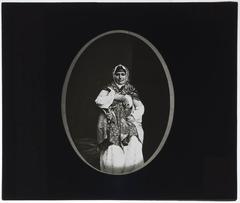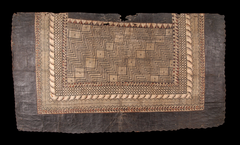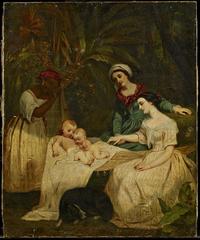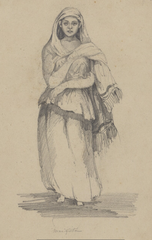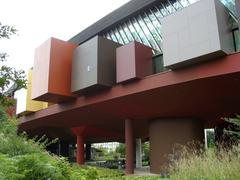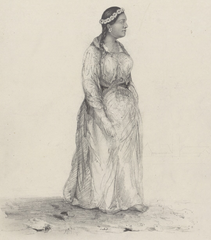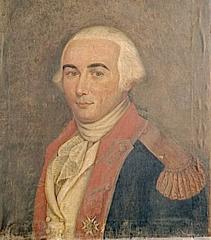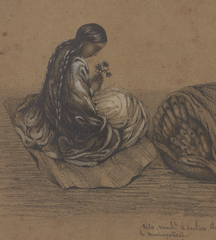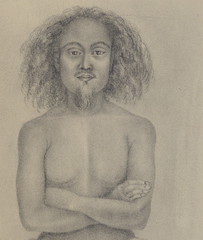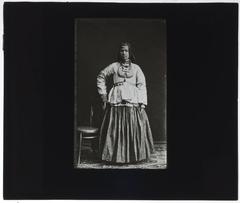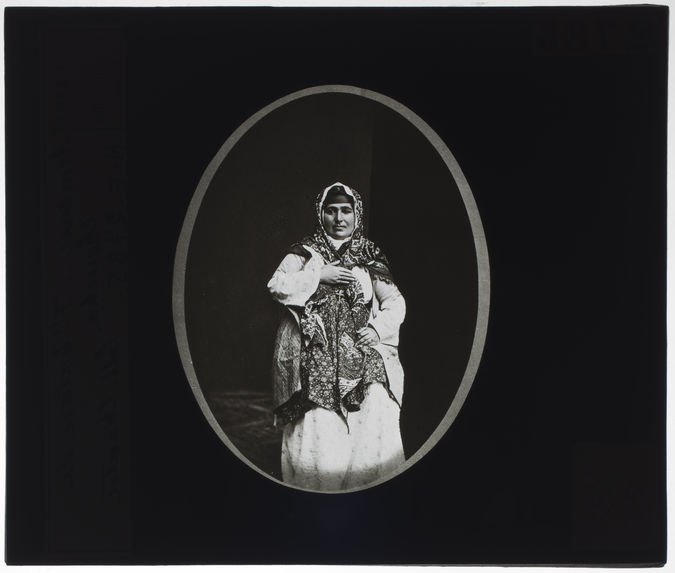
Musée du Quai Branly – Jacques Chirac: Visiting Hours, Tickets, and Paris Historical Sites Guide
Date: 14/06/2025
Introduction
Nestled in the heart of Paris, just steps from the Eiffel Tower, the Musée du Quai Branly – Jacques Chirac stands as a beacon of intercultural dialogue and artistic celebration. Conceived in the mid-1990s by President Jacques Chirac, the museum was established to honor and elevate the arts and civilizations of Africa, Asia, Oceania, and the Americas—fields long overlooked in traditional Western narratives. Today, it is both a world-class museum and an architectural masterpiece, welcoming visitors into a vibrant exploration of global human creativity (paris.evous.fr; quaibranly.fr).
This comprehensive guide details the museum’s history, architectural features, collections, visiting hours, ticketing information, accessibility, special exhibitions, and practical tips to help you make the most of your visit to one of Paris’s most compelling cultural institutions (france.fr; thebettervacation.com).
Historical Background
Origins and Vision
The Musée du Quai Branly – Jacques Chirac was born from a desire to recognize and showcase non-European arts and cultures, which had previously been scattered across different Parisian museums. President Jacques Chirac initiated the project in 1995, uniting important collections from the Musée de l’Homme and the Musée National des Arts d’Afrique et d’Océanie. This consolidation fostered a commitment to intercultural dialogue and recognition of global artistic achievements (quaibranly.fr).
Collection Heritage
With over 370,000 objects and nearly one million associated iconographical and reference pieces, the museum is one of Europe’s most significant repositories of non-European civilizations. The collection spans from Neolithic times through the 20th century, offering an unparalleled window into the history, art, and daily life of cultures around the world (france.fr).
Architectural Innovation
Jean Nouvel’s Vision
The museum’s innovative architecture, designed by Jean Nouvel, blends seamlessly with nature and Paris’s urban landscape. Nouvel’s design emphasizes fluidity, openness, and a strong integration with the museum’s gardens—an 18,000-square-meter landscape by Gilles Clément. Patrick Blanc’s vertical garden further enhances this connection, enveloping the façade in lush, living greenery (jeannouvel.com; archdaily.com).
Notable Features
- Glass Wall Entrance: A 200-meter glass wall marks the threshold between the city and the museum’s immersive world (france.fr).
- Hanging Exhibition Spaces: The building’s “floating” galleries are suspended above the gardens, creating a sense of discovery (wikiarquitectura.com).
- Eco-Conscious Elements: Photovoltaic panels, natural light, and the vertical garden contribute to the museum’s sustainability (archiobjects.org).
Visiting the Musée du Quai Branly – Jacques Chirac
Location and Accessibility
- Address: 37 Quai Jacques Chirac, 75007 Paris, France (Sortir à Paris).
- Public Transport: Metro line 9 (Iéna, Alma-Marceau), RER C (Pont de l’Alma), and several bus lines. Paid parking is nearby, but public transport is recommended.
- Accessibility: Fully accessible with ramps, elevators, adapted restrooms, and wheelchairs available on request. Assistance dogs are welcome (m.quaibranly.fr).
Visiting Hours
- Tuesday to Sunday: 10:30 AM – 7:00 PM
- Thursday: Extended hours until 10:00 PM
- Closed: Mondays and May 1st (quaibranly.fr)
Tickets and Admission
- Full Price: €12
- Reduced Price: €9 (students, teachers, groups, EU citizens under 26)
- Free Admission: Under 18s, EU residents under 26, and all visitors on the first Sunday of each month
- Special Exhibitions: May require a separate ticket or supplement (Come to Paris)
- Booking: Highly recommended online via the official website or authorized partners
Visitor Services and Amenities
- Cloakroom: Free, for coats, bags, and umbrellas
- Dining: Café Branly (ground floor café) and Les Ombres (rooftop restaurant with Eiffel Tower views)
- Museum Shop: Books, art objects, jewelry, and gifts
- Gardens: Accessible without a ticket, offering a tranquil retreat (Sortir à Paris)
- Wi-Fi and App: Free Wi-Fi; official app provides interactive maps, audio tours, and multimedia content
Museum Layout and Navigation
- Permanent Collections: Organized by continent—Africa, Asia, Oceania, Americas—with over 3,500 objects on display at any time (thegeographicalcure.com).
- Temporary Exhibitions: Held in the East Mezzanine and the Marc Ladreit de Lacharrière Gallery.
- Signage: Clear, multilingual (French, English, Spanish). The museum app enhances navigation and information.
Permanent Collections
The museum’s permanent collections are among the world’s most diverse, featuring:
- Africa: Ritual masks, wooden sculptures, textiles, ceremonial artifacts
- Asia: Textiles, religious statuary, lacquerware, musical instruments
- Oceania: Totem poles, masks, canoes, ceremonial objects
- Americas: Featherwork, pottery, textiles, and ritual items from indigenous peoples (travelpander.com; thebettervacation.com)
Marc Ladreit de Lacharrière Gallery
This gallery showcases a prestigious collection of Oceanic and African art bequeathed to France, offering a contemplative space for visitors (galeriejoseph.com).
Temporary Exhibitions and Programming
The museum’s dynamic temporary exhibitions provide fresh perspectives and highlight rare or previously unseen objects. In 2025, notable exhibitions include:
- “Golden Threads: The Art of Dressing from North Africa to the Far East” (Feb 11 – Jul 6, 2025): Exploring gold textile arts (culturezvous.com).
- “Objets – Ways of Seeing / L’Objet en Question” (Feb 11 – Jun 22, 2025): Dialogue between archaeology, ethnology, and avant-garde art (galeriejoseph.com).
- “Tarō Okamoto” (Apr 15 – Sep 7, 2025): Retrospective of the Japanese artist (quaibranly.tickeasy.com).
- “Dakar-Djibouti” (Apr 15 – Sep 14, 2025): Examining an influential ethnographic expedition (quaibranly.tickeasy.com).
- “Zombies: Is Death Not an End?” (Oct 8, 2024 – Feb 16, 2025): The Haitian origins and cultural significance of the zombie myth (Come to Paris)
Programming includes workshops, lectures, performances, and artist residencies. Check the museum calendar for updates.
Tips for a Successful Visit
- Book Tickets in Advance: Especially for temporary exhibitions and busy periods.
- Visit Early or on Weekdays: For a quieter experience.
- Allow 2–3 Hours: To fully explore collections and exhibitions.
- Photography: Permitted in most permanent collections (no flash); restrictions may apply to temporary exhibits.
- Family-Friendly: Interactive displays and workshops for all ages.
- Use the App: For maps, tours, and additional multimedia.
Visual and Interactive Resources
High-quality images, virtual tours, and interactive maps are available on the official website and app. For a remote preview, explore the virtual tour.
Cultural and Social Impact
The museum plays a key role in challenging Eurocentric narratives, fostering global cultural literacy, and promoting social inclusion. Its research and educational missions include addressing the legacies of colonialism and engaging with indigenous communities (travelpander.com).
Frequently Asked Questions (FAQ)
Q: What are the opening hours?
A: Tuesday to Sunday, 10:30 AM–7:00 PM; Thursdays until 10:00 PM. Closed Mondays and May 1st.
Q: How can I buy tickets?
A: Online via the official museum website or authorized partners. Advance booking is recommended.
Q: Is the museum accessible for visitors with disabilities?
A: Yes, with ramps, elevators, adapted restrooms, and wheelchairs available.
Q: Are guided tours available?
A: Yes, in multiple languages. Book in advance.
Q: Is the museum suitable for families?
A: Absolutely. There are interactive displays and workshops for children and families.
Essential Visitor Information
- Address: 37 Quai Jacques Chirac, 75007 Paris, France
- Official Website: www.quaibranly.fr
- Contact: +33 (0)1 56 61 70 00
- Nearest Metro: Iéna (Line 9), Alma-Marceau (Line 9)
- Nearest RER: Pont de l’Alma (RER C)
- Accessibility: Fully accessible for visitors with disabilities
- Free Admission Days: First Sunday of each month
For updated information on exhibitions, ticketing, and visitor services, consult the official museum website or Sortir à Paris.
Summary and Final Recommendations
The Musée du Quai Branly – Jacques Chirac offers a unique journey through the artistic and cultural heritages of Africa, Asia, Oceania, and the Americas. Its remarkable permanent collections, architectural innovation, and vibrant programming position it as a leading Paris historical site. With comprehensive visitor amenities and a commitment to accessibility and education, the museum welcomes all audiences.
Plan your visit by checking opening hours, booking tickets online, and exploring current exhibitions for the richest experience. Enhance your trip with the museum’s app and consider nearby Parisian landmarks for a full cultural itinerary. For further resources and updates, follow the museum’s official channels and explore our related guides on Paris’s top historical sites.
References and Further Reading
- History of the Collections – Musée du Quai Branly – Jacques Chirac
- Wikipedia: Musée du Quai Branly – Jacques Chirac
- Sortir à Paris: Musée du Quai Branly Guide
- Travelpander: What is the Quai Branly Museum in Paris?
- Jean Nouvel: Musée du Quai Branly
- ArchDaily: Musée du Quai Branly – Ateliers Jean Nouvel
- France.fr: Quai Branly Museum
- Visitor Information – Musée du Quai Branly
- Come to Paris: Exhibition Tickets
- Galerie Joseph: “Objets en Question” Exhibition
